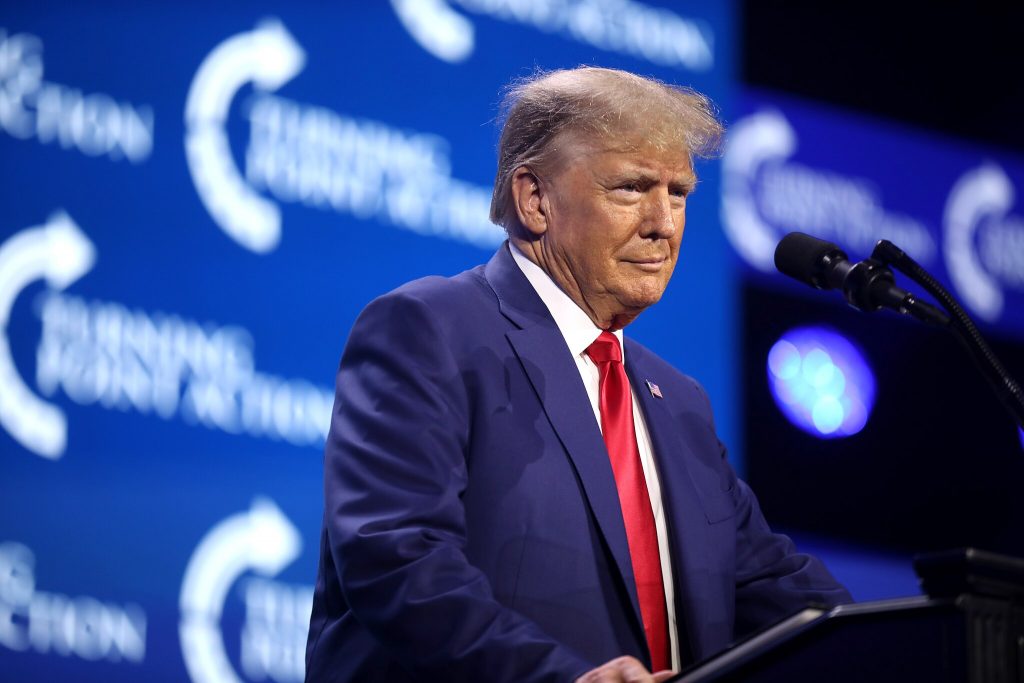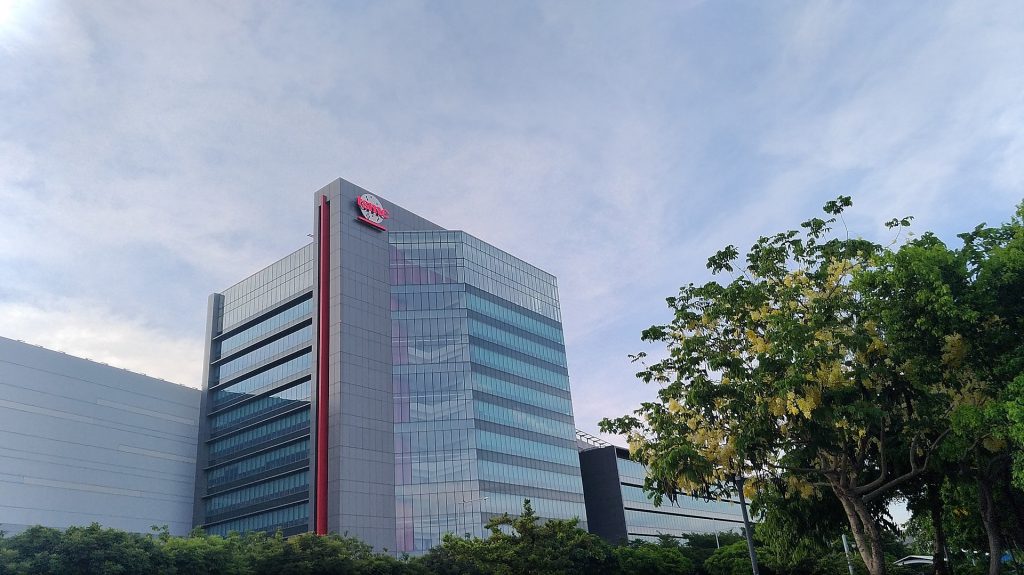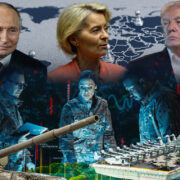Two elections this year may shift the triangular balance of power between China, India and the US.
Indian prime minister Narendra Modi is expected to be returned to power after the Indian elections, which run from April 19 to June 1. Modi has woven a close relationship with Donald Trump, who is seeking re-election as US president in November.
Modi established a strong relationship with Trump during his first presidency. Both men have strong nationalistic credentials, possess larger-than-life personas, and focus on immigration policies.
If both Trump and Modi ascend to power, India-US ties are likely to be stronger than ever.
Meanwhile, the China-US relationship is not doing well. Trump’s tariffs that continued throughout Biden’s presidency may be ramped up if Trump returns to the White House. In an interview with Fox News’ Sunday Morning Futures, Trump announced that if re-elected, tariffs on Chinese goods would exceed 60 percent.

G.Tech Technology Factory Zhuhai China in 2015 (Photo: dcmaster / Flickr.com)
But that’s not all. Trump intends to further reduce US dependency on the Chinese economy by phasing out all essential Chinese imports within four years, banning US firms who outsource to China from obtaining federal contracts, and preventing Chinese firms from owning key infrastructure in the energy, technology and agricultural sectors.
Moreover, since Trump had banned US firms from investing in Chinese companies that may compromise US security during his first presidency, it is likely that he would do the same during his second administration.
As the Chinese economy weakens and the youth unemployment rate remains high at 14.9 percent, China needs foreign funds to stimulate its ailing economy and increase exports. Unfortunately for Beijing, Trump’s agenda not only undermines China’s economic recovery but US prohibitions of its tech firms from investing in China would also batter Beijing’s ambitions of becoming a world leader in artificial intelligence by 2030.
Rise of India
Even though Trump intends to slap a baseline tariff of 10 percent on all imports, the high tariffs levied on Chinese imports present huge trading opportunities for India. As the US economy becomes increasingly disengaged from the Chinese economy, US firms will look to diversify their supply chains and source goods elsewhere.
India is poised to be China’s alternative for three reasons.
One, India has a thriving manufacturing industry with government support. Two, there are many relatively youthful workers in country, which can support the industry. Three, the US sees India as less of a security risk than China.
Furthering ties with the US would be well received by Delhi given how Beijing’s influence within south Asia has risen under the Belt and Road Initiative (China’s plan to create a global trade network). The US has always been keen on nurturing India as a “counterbalance to China” and attempts to contain China’s influence through the “Quad”, a four member security group, which includes the US, India, Japan and Australia.
The Tariff Problem
In January 2018 Trump began an unprecedented trade war against China by imposing a 25 percent tariff on Chinese imports. Beijing retaliated by imposing its own tariffs on US goods, and Sino–US ties spiralled downhill culminating into the 2019 recalls of Chinese giant pandas from the San Diego zoo in California (a hugely symbolic gesture by the Chinese government).
The tariffs, which tax Chinese imports, were supposed to protect American interests. But as the US economy relies heavily on Chinese imports, US consumers and firms have had to pay more for goods.
By 2019, Trump’s tariffs cost the US an estimated 300 000 jobs. The US economy shrank, and in 2020 the tariffs cost the US a whopping US$316 billion (£249 billion).

Former President of the United States Donald Trump speaking with attendees at the 2023 Turning Point Action Conference at the Palm Beach County Convention Center in West Palm Beach, Florida (Photo: Gage Skidmore / Wikimedia Commons)
Beijing is worried about a second Trump administration. Since 2018, China has sought to minimise the impact of Trump’s trade war by adopting a policy of self-reliance. This meant a reduction of China’s imports of inputs of production into the high tech, electric and automotive industries.
However, China’s ability to minimise its dependence on the international community is highly limited.
The Chinese leadership knows this, and pundits speculate that a main reason why Xi attended the Asia-Pacific Economic Cooperation meeting in San Francisco was to repair ties with the west and attract much needed foreign investment into China.
The Taiwan Problem
In 2012, Trump tweeted an iconic phrase from the Chinese classic Sun Tzu’s Art of War: “The Supreme Art of war is to subdue the enemy without fighting.” But if he had read the rest of Sun Tzu’s work, he would be aware of the following: “When you surround an army, leave an outlet free. Do not press a desperate foe too hard.”
Trump should realise that Washington’s increased aggression towards China may only undermine Taiwan’s security.
For a while now, Beijing’s desire to unify with Taiwan was largely a nationalistic exercise aimed at legitimising the “one China policy”. But the need to acquire Taiwan has gone beyond historical fervour to economic desire, given the island state’s advancement in semiconductor technology, and China’s current economic woes.

One of TSMC’s factories in Taichung’s Central Taiwan Science Park (Photo: Briáxis F. Mendes / Wikimedia Commons)
Artificial intelligence is important because it will confer major economic, technological, and military benefits to China. And if China wishes to be the world’s AI leader by 2030, it needs to get its hands on semiconductor chips. If China can’t access that through trade, it might forcefully acquire this technology by invading Taiwan.![]()
This article is republished from The Conversation under a Creative Commons license. Read the original article.







